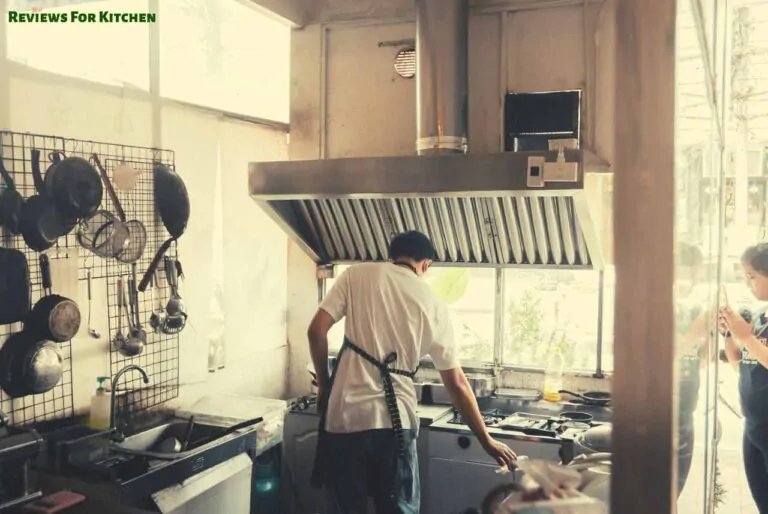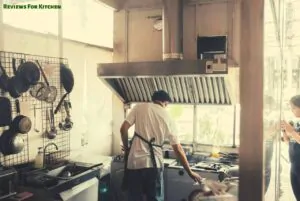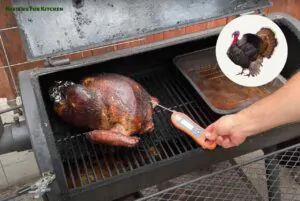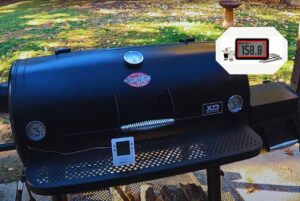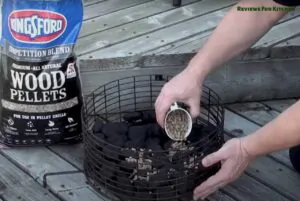Is your kitchen filled with stormy smoke when you cook? You turn on the range hood to suck up the polluted air. But discovered it isn’t doing its job as usual. Your mind wanders with frustration… Is my range hood faulty? Is it not powerful enough to suck up foggy smoke? It needs testing to ensure its suction power functionality.
But how to do it?
I’ll explain 4 methods on how to test range hood suction, and the solution in this blog. So don’t worry. Therefore, you can rest assured that your kitchen hood is properly ventilated.
What Is Range Hood Suction?
A range hood’s suction power is generally measured in cubic feet per minute (CFM). The CFM refers to how much-polluted air or airborne pollutants the range hood can extract through the duct system in order to maintain the quality of the air in the kitchen.
How Does A Range Hood Suction Work?
Irrespective of range hood style, type, and model, most of their suction work with an electrical motor and fan.
A powerful motor and a fan are inside the hood, and both are interconnected. So, when you supply electricity to the motor, the fan will start working to make a negative air pressure in the kitchen.
However, most range hoods allow you to set up the fan speed (level 1,2 or 3; Low, medium, or high) based on your needs. The fan will create negative air pressure according to your speed level settings. And the suction filter also pulls smoke, steam, grease, and other airborne particles based on the fan speed level.
When Do You Need To Test Range Hood Suction?
Typically, you don’t need to test your range hood suction. But there are some specific situations when you have to test it. So you can feel confident about its functionality.
Situation 1: Heavy Steam
If your kitchen lingers with steam and smoke even after using the range hood. It indicates the range hood’s poor suction ability. So, in this case, you should test its suction.
Situation 2: Unpleasant Food Smells
Is it smelling unpleasant food odors in the kitchen? Run the hood at high speed, yet the aromas won’t disappear. It might be poor suction that fails to eliminate the food smells properly. That means you need to check the hood’s suction.
Situation 3: After New Hood Installation
If you install the range hood alone without any professional help. So, before leaving the hood, you have to test its suction to ensure proper installation that meets your ventilation requirements.
Situation 4: Before Selling Home
If you want to sell your home. As you charge a bit high price for your kitchen range hood. That’s why it’s mandatory to test your hood suction. If you find any issues, you have to repair them before finalizing your home’s sales price. Because an installed range hood matters a lot for many homebuyers.
You may also like to know: 5 Best Range Hood For High Ceilings | 9 To 12 Foot
How To Test Range Hood Suction? (5-10 Minutes Task)
A proper functioning range hood is a must to ensure comfortable and convenient cooking experiences. And testing the range hood suction can get back the comfort that you enjoy when you first install your hood.
However, you don’t have to know rocket science or hire a professional to test your range hood suction. Because, now I’ll tell you 5 easy, simple, and effortless ways to test your hood. Those are
Method 1: Paper Test
You must have papers or newspapers in your home. And you can test your range hood suction power using a simple piece of paper. Wondering; how? Here’s the process
Needed Materials
- A piece of paper/newspaper
Steps To Follow
- Turn your range hood on and set its fan at the highest speed.
- Run the hood for 5 minutes to create enough suction.
- Then, hold the newspaper under 6-8 inches from your hood filter.
- Now, observe the newspaper’s movement.
Positive Results Interpretation
- If the filter pulls the paper towards it. And the paper tightly holds against the filter. It means your kitchen hood’s suction is ok, and it works properly.
Negative Results Interpretation
- But, if the filter won’t pull the newspaper towards it. Or the paper is blown away from your hood. It indicates the hood’s suction is faulty and doesn’t work as usual.
Method 2: Smoke Test
Pulling out the smoke from your kitchen is the ultimate functionality of your range hood’s suction. So, you can smoke test it because it’s the second easiest, cheapest, and most straightforward procedure.
Needed Materials
- 5-6 large pieces of papers
- A candle
- A lighter
- A smoke pencil (optional)
Steps To Follow
- Turn your range hood on and set its fan at the highest speed.
- Run the hood for 5 minutes to create enough suction.
- Light the candle and burn the paper pieces to create heavy smoke. Or hold the smoke light for 1 minute near your range hood.
- Now, observe the smoke density of your kitchen.
Positive Results Interpretation
- If the range hood pulls out the smoke through the vent and filter. It means the suction of your range hood works appropriately.
Negative Results Interpretation
- But if the smoke is still in the kitchen and won’t blow away with the hood. It indicates the suction won’t work correctly. There might be an issue or malfunctioning with the suction.
Method 3: Damper Test
A damper/flap/valve in the air-flowing point will open when you use the hood. It offers you adequate ventilation while cooking. So, now you can test suction with this damper.
Needed Materials
- A measuring tape
- A piece of cardboard or paper
Steps To Follow
- Turn your range hood on and set its fan at the highest speed.
- Run the hood for 5 minutes to create enough suction.
- Measure the gap between the duct and damper using a measuring tape.
- After that, pick a slightly larger cardboard or paper than your measured gap.
- Hold the cardboard/paper over the hood’s damper covering its opening space.
- Now, ask your partner to observe the cardboard/paper standing outside.
Positive Results Interpretation
- If the cardboard/paper is sucked toward the damper and tightly held against it. That indicates your hood’s suction works correctly and provides enough ventilation for your kitchen.
Negative Results Interpretation
- On the other hand, if the cardboard/paper doesn’t suck towards the damper. Or if there is a gap between the cardboard/paper and the damper opening. It means there is an issue with the hood’s suction, and for this, it won’t work correctly.
Method 4: CFM Test
Typically, a range hood comes with 100 to 1200 CFM based on its size and model. And you can test your range hood suction power in two ways with this CFM. Such as
Way 1: Manually
You can manually test the range hood suction using a simple cup or bowl.
Needed Materials
- A 240 oz paper cup or bowl
Steps To Follow
- Hold the cup under the hood’s vent outlet.
- Turn on the range hood and its fan at high speed.
- Observe the empty bowl.
Positive Results Interpretation
- If it takes approximately 10 seconds to fill up with smoke. It indicates your kitchen hood works properly with an adequate amount of CFM.
Negative Results Interpretation
- Or if it takes more than 10 seconds (20-30 seconds). It indicates poor suction of your range hood.
Way 2: Scientifically
Science and technology bless our life with many gadgets and tools. Scientists discover a meter to measure the CFM rate of the kitchen range hood, whose name is digital Anemometer. You can use the meter to test the suction.
Needed Materials
- A CFM (cubic feet per minute) meter
- A ladder
Steps To Follow
- Turn your range hood on and set its fan at the highest speed.
- Run the hood for 5 minutes to create enough suction.
- Since the hood’s duct is on the exterior wall or roof, reach the chimney using a ladder that vents air outside.
- Tell your partner to hold the CFM meter as close as possible below the duct.
- Read the CFM rate of the meter and record it.
- Do the same thing, setting the fan at low and medium speed levels.
Positive Results Interpretation
- Now, match the manufacturer-specified CFM and your recorded CFM. If both of the CFM match, that means your range hood suction works appropriately.
Negative Results Interpretation
- If your recorded CFM is lower than the manufacturer’s specification CFM. It indicates the suction power of your range hood may not be adequate for your kitchen size.
You may also like to know: 5 Best Range Hood For High Ceilings | 9 To 12 Foot
How To Solve Poor Range Hood Suction
So, now you have completed your range hood suction test. If you find the hood suction is ok, there’s nothing to do.
But, if you find poor suction of your range hood after the test. You have to take steps to fix the issue. And here are the two best possible ways you can solve it.
Solution 1: Checking Clogged Filters & Clean Them
Check the charcoal or mesh filters of the hood. If they look foggy, sticky, and greasy. They might be clogged with airborne dirt and particles. So once you clean the filters, they work as before and you get the proper suction power.
Steps To Follow
- First, remove the charcoal or mesh filters from the hood to clean.
- Leave them in your dishwasher and wash. (If the filters are dishwasher safe)
- If they aren’t dishwasher safe, wash them with soapy water.
- Rinse with clean water and wipe down to dry.
- Reinstall the filters in the hood, and turn it on.
If you want to learn a detailed procedure about mesh filter cleaning. Here’s a post for you.
Solution 2: Malfunctioning Range Hood Fan
If the range hood suction is still poor. It might be because its fan is malfunctioning.
Steps To Follow
- In that case, first, check out the electrical connection of the fan.
- If that’s alright, it’s better to contact a professional to diagnose and repair the issue.
How To Improve Range Hood Suction?
It’s essential to improve your range hood suction to avoid poor suctioning hassle. Following a few simple tips can improve the suction. Such as
- Periodically clean your range hood filter depending on your cooking frequency and style. For heavy cooking, clean the filter every 1-2 months. While cleaning the filter every 3-4 months is ok for light cooking.
- If you have used the filter for more than 1 year with heavy cooking, replace it with a new one.
- Once a year, re-check the ductwork of your hood to ensure there are no obstacles or blocks outside the vent.
- While checking the ductwork, look at the ductwork and hood connection to ensure there is no leakage or any damage.
- And when checking if you find that the duct is dirty, it needs cleaning. Don’t know how to clean the range hood duct. Check this post, as here I wrote a separate post on it.
- You must use the right size of hood based on your kitchen. Because a small hood in a large kitchen can’t offer enough suction to ventilate the space effectively.
- Ensure the correct height of the hood during the installation. A misleading height adjustment hood installation can’t correctly capture the smoke and steam that your kitchen produces.
Test Your Kitchen Range Hood Suction & Ensure Higher Ventilation
A sound ventilation system must protect your kitchen from heavy smoke, unappealing food odors, and sticky grease. And you install a range hood to serve this purpose.
But as time passes, the suction power of your hood can reduce. That time, you have to test the hood suction if you find poor ventilation.
This guide helps you overcome the challenges of range hood testing, defining results, and finding solutions for faulty hood.
However, if the problem is out of your DIY skill, without delay, hire a professional. As it’s the question of your healthy and comfortable cooking experience.
You May Also Like to Know
- Best Ductless Range Hood With Charcoal Filter To Enjoy Fresh Air
- Best Ductless Under Cabinet Range Hood For Convenient Cooking
- Best Ducted Range Hoods For Gas Stoves | Reviews & Buying Guide
- 5 Best Ceiling Mount Range Hood For Your Kitchen
- 5 Best Vented Range Hood For Your Healthy Kitchen Environment
- 5 Best Range Hood For Chinese Cooking To Remove Heavy Grease & Smoke
- 5 Best Under Cabinet Ducted Range Hood for Your Perfect Kitchen
- 5 Best Recirculating Range Hood To Smoke Free Your Kitchen
- How To Clean Range Hood Mesh Filter | A Step-by-Step Guide
- How To Install a Range Hood on a Slanted Ceiling
- How To Vent Range A Hood Through A Roof | Easy Guide
- 4 Ways To Determine How Far Should a Range Hood Stick Out

